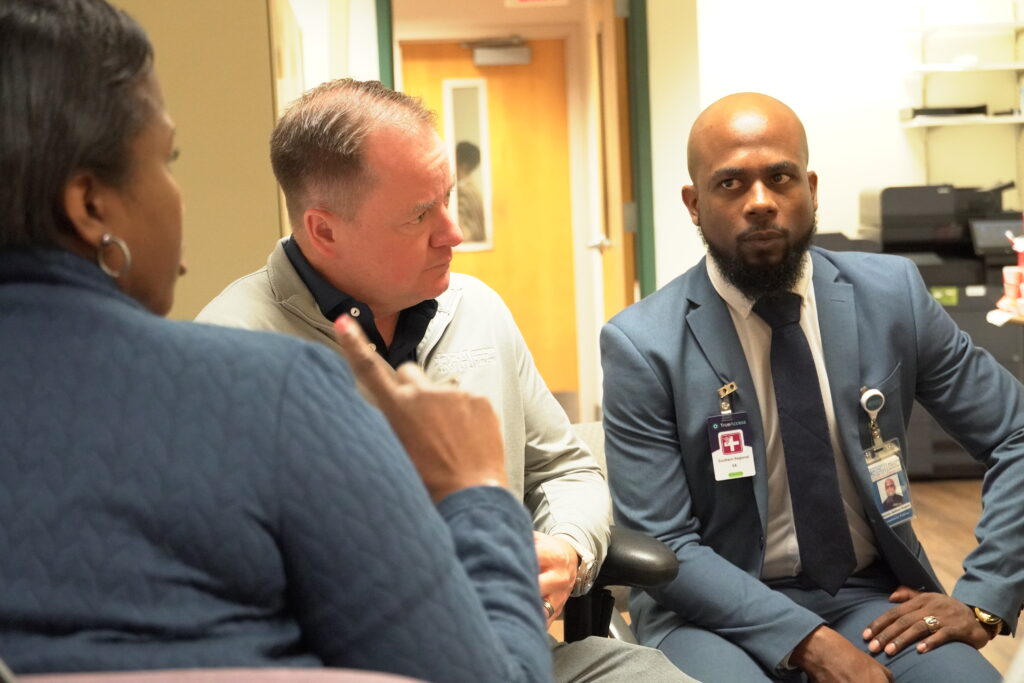Not all wounds are the same. Some are straightforward and heal quickly. Others linger, resist treatment, and create long-term health risks. Understanding the difference between acute and chronic wounds is the first step in getting the right care. At Restore First Health, we specialize in treating chronic wounds through advanced mobile wound care, delivered
directly in the home.

So, What Is an Acute Wound?
An acute wound is a new injury that follows a predictable healing timeline. These wounds typically heal in less than four weeks and go through the four normal stages of healing: hemostasis, inflammation, proliferation, and maturation.
Common acute wounds include:
- Surgical incisions
- Minor cuts and abrasions
- Lacerations
- First-degree burns
With appropriate care, acute wounds close on their own or with minimal intervention.
Let’s talk about: What is a Chronic Wound?
A chronic wound is one that fails to heal within four weeks or does not show signs of significant improvement over eight weeks. These wounds are often complicated by comorbid conditions such as diabetes, vascular disease, immobility, or poor nutrition.
Examples of chronic wounds include:
- Diabetic foot ulcers
- Pressure injuries (bedsores)
- Venous leg ulcers
- Arterial ulcers
- Traumatic wounds that are not healing
Chronic wounds affect over 8 million Americans and are associated with higher rates of infection, hospitalization, and mortality.
Watch: The Real Risk Behind a Chronic Wound
Why Chronic and Complex Wounds can be Dangerous
When a wound remains open and unhealed, the risk of complications increases. Patients may experience:
- Infection or sepsis
- Tissue necrosis
- Functional decline
- Amputation
- Frequent hospitalizations or readmissions
In patients over age 65, especially those who are homebound or have limited mobility, chronic wounds can rapidly spiral into major health events.
How Restore First Health Supports Chronic Wound Care
Chronic wound care requires more than basic dressing changes. It calls for advanced expertise, consistent monitoring, and seamless communication across the entire care team.
At Restore First Health, we bring hospital-level wound care into the home. Our mobile care teams include nurse practitioners, physicians, wound care RNs, and care coordinators who specialize in advanced therapies and full-body assessments.
What Sets Us Apart
- Multidisciplinary team: Physicians of various specialties including wound care, critical care, podiatry, plastic surgery and vascular surgery review each case with our advanced nurse practitioners.
- Care Coordination: From the first referral to every follow-up, our team works with patients, families, home health, and primary care providers to make sure everyone is aligned.
- Advanced Technology: We use bedside tools like MolecuLight imaging, ABI testing, wound vacs, and CTP’s, to treat wounds with precision and speed.
- Personalized Care Plans: Every wound is evaluated based on etiology, patient condition, home environment, and systemic risk factors to design a tailored plan for healing.
For a full overview of our mobile wound care model, visit restorefirsthealth.com/mobile-wound-care
Chronic and Complex Wounds Require a Different Level of Care
Acute wounds are common and often heal without issue. Chronic wounds, on the other hand, are a sign of deeper problems and need a specialized response.
At Restore First Health, we meet patients where they are at home — and provide advanced, coordinated care to give them the best chance at healing. Our goal is not just to manage the wound, but to restore quality of life.
Learn More or Get Started
Request a Consult
Refer a Patient
References
- Nussbaum, S. R., Carter, M. J., Fife, C. E., DaVanzo, J., Haught, R., Nusgart, M., & Cartwright, D. (2018). An Economic Evaluation of the Impact, Cost, and Medicare Policy Implications of Chronic Nonhealing Wounds. Value in Health, 21(1), 27–32. https://doi.org/10.1016/j.jval.2017.07.007
- Wound Healing Society. (2006). Wound healing clinical practice guidelines. https://woundheal.org
- Frykberg, R. G., & Banks, J. (2015). Challenges in the Treatment of Chronic Wounds. Advances in Wound Care, 4(9), 560–582. https://doi.org/10.1089/wound.2015.0635
- National Institutes of Health. (2021). Wound healing and care. https://www.ncbi.nlm.nih.gov
